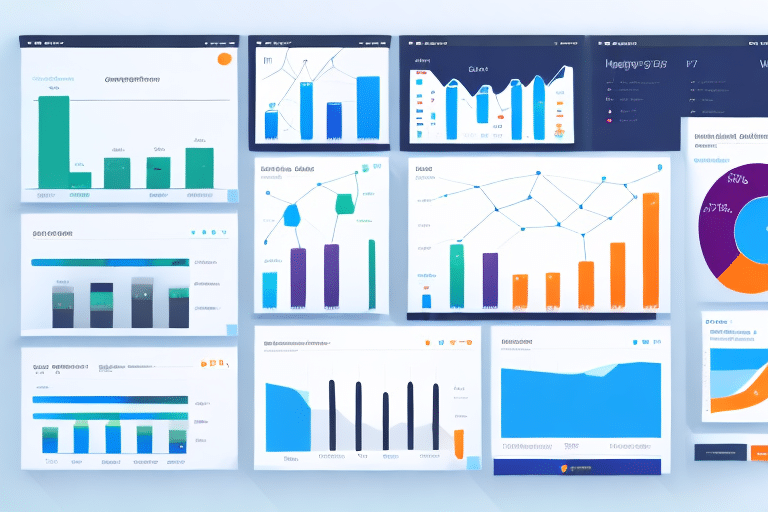Preparing Your Ecommerce Store for Peak Season
Peak season is a crucial time for any ecommerce business, marked by high demand, increased online traffic, and greater sales opportunities. According to Shopify, businesses can experience up to a 30% increase in sales during peak periods such as holidays and special events. However, this period can also present various challenges, including managing inventory, fulfilling orders, maintaining customer satisfaction, and protecting sensitive data. In this article, we will discuss strategies that ecommerce businesses can implement to prepare for peak season and maximize their sales potential.
Analyzing Past Peak Sales Data to Plan for the Future
One of the most effective ways to prepare for peak season is to analyze past sales data. This data can provide valuable insights into customer behavior, popular products, sales trends, and more. By analyzing this data, you can develop a better understanding of what to expect during peak season, determine which products are likely to sell the most, and plan your inventory accordingly.
Additionally, you can use this information to identify areas of improvement in your ecommerce operations and adjust your strategy to better meet customer demands and preferences. This may include optimizing your website for a better user experience, improving your customer service and support, or developing new marketing campaigns that target specific customer segments.
Another benefit of analyzing past sales data is identifying seasonal patterns or trends in customer behavior. For example, you may notice that certain products sell better during specific times of the year, or that customers tend to make larger purchases during certain holidays or events. By understanding these patterns, you can adjust your inventory and marketing strategies to better capitalize on these trends and maximize your sales potential.
Finally, analyzing past sales data can also help you identify potential risks or challenges that may arise during peak season. For example, you may notice that certain products have a higher return rate or that shipping times tend to be longer during certain periods. By identifying these challenges ahead of time, you can take steps to mitigate their impact and ensure a smoother, more successful peak season for your ecommerce business.
Optimizing Your Website for High Traffic and Increased Sales
Your website is the backbone of your ecommerce business, and it is crucial to optimize it for peak season. This involves ensuring that your website can handle the increased traffic that comes with higher sales volumes, as well as making sure that all aspects of your website are up-to-date and functioning correctly.
To optimize your website, consider performing the following tasks:
- Test your website's speed and performance using tools like Google PageSpeed Insights to ensure fast loading times.
- Optimize your mobile experience, as mobile commerce accounts for over 60% of ecommerce sales according to Statista.
- Streamline your checkout process to reduce cart abandonment rates, which average around 69.57% in the US as reported by BigCommerce.
- Ensure your website is secure by implementing SSL encryption and protecting sensitive customer information from cyber threats.
Another important aspect of optimizing your website is ensuring that your content is relevant and engaging to your target audience. Conducting market research and analyzing your website's analytics can help you understand your customers' behavior and preferences. By creating content that resonates with your audience, you can increase engagement and drive more sales.
Regularly updating your website with fresh content and new products not only keeps your customers interested but also improves your search engine rankings, making it easier for potential customers to find your website and products.
Creating a Marketing Strategy to Attract More Customers
An effective marketing strategy can help you attract more customers and increase your sales during peak season. Strategies may include:
- Developing targeted marketing campaigns that focus on specific customer segments.
- Creating engaging social media content to promote your products and services.
- Leveraging influencers to promote your brand and products to their followers.
Another strategy to attract more customers is to offer special deals and discounts during peak season. This can help drive traffic to your website and encourage customers to make purchases.
In addition to these strategies, it's important to focus on providing excellent customer service. This includes offering personalized recommendations, responding promptly to customer inquiries and complaints, and ensuring that your website is user-friendly and easy to navigate. By providing a positive customer experience, you can build customer loyalty and encourage repeat business.
Developing a Promotional Campaign to Boost Sales
In addition to attracting more customers, you can boost sales by developing a promotional campaign that encourages existing customers to make more purchases. Effective promotional strategies include:
- Offering special promotions and upselling related products.
- Using email marketing to promote sales and exclusive offers.
- Creating limited-time bundles or exclusive products available only during peak season to create urgency and scarcity.
Implementing a loyalty program can also encourage repeat purchases by offering rewards for frequent purchases, exclusive discounts, or early access to new products. Tracking the success of your promotional campaign through sales data and customer feedback allows you to make necessary adjustments and maximize the impact of your efforts.
Increasing Inventory Stock and Implementing Efficient Fulfillment Processes
Managing inventory levels and fulfilling orders efficiently are significant challenges during peak season. To prepare:
- Partner with suppliers to ensure timely delivery of products.
- Invest in additional inventory storage capacity.
- Streamline your order fulfillment processes to reduce delivery times and improve customer satisfaction.
Understanding your customers' buying patterns and preferences by analyzing data from previous peak seasons helps you identify popular products and adjust your inventory levels accordingly. Additionally, offering incentives such as free shipping or discounts for faster shipping options can reduce delivery times and enhance customer satisfaction.
Offering Special Deals and Discounts to Encourage Purchases
Offering special deals and discounts is an effective strategy for peak season. Options include:
- Free shipping promotions.
- Bundling products to create value packages.
- Exclusive discounts or promotions for customers who sign up for your email list or follow you on social media.
Creating a sense of urgency can make your deals more enticing. For example, limited-time discounts or flash sales that last only a few hours can encourage customers to make purchases before the deal expires.
Ensure that your special deals and discounts are prominently displayed on your website and in your marketing materials. Using eye-catching graphics or banners can help highlight your promotions and attract potential customers.
Improving Customer Service and Support for High-Volume Orders
Maintaining high levels of customer satisfaction during peak season requires superior customer service and support. Consider the following strategies:
- Hire additional customer service staff to handle high-volume orders.
- Implement automated chatbots to answer common customer queries.
- Develop a comprehensive FAQ section to address common questions and concerns.
Implementing Effective Security Measures to Protect Sensitive Customer Data
As online shopping grows, so do the risks of cyber threats and data breaches. To protect your customers' sensitive information and maintain their trust, implement the following security measures:
- SSL encryption to secure data transmission.
- Two-factor authentication for account security.
- Regular security updates and patches to protect against vulnerabilities.
Stay informed about the latest security threats and best practices by following resources like the CSO Online security guidelines.
Leveraging Social Media and Influencers to Drive Sales During Peak Season
Social media platforms such as Facebook, Instagram, and Twitter offer powerful channels to reach and engage with customers during peak season. By leveraging these platforms to promote your products and services, you can build brand awareness, increase website traffic, and drive more sales.
Partnering with influencers in your industry can amplify your reach. Influencer marketing has been shown to drive a higher engagement rate; according to Influencer Marketing Hub, businesses earn an average of $5.78 for every $1 spent on influencer marketing.
Utilize targeted ads and sponsored posts to reach specific demographics and measure the effectiveness of your campaigns through analytics tools provided by social media platforms.
Maximizing Email Marketing Campaigns During High-Demand Periods
Email marketing remains one of the most effective digital marketing channels for ecommerce businesses. During peak season, maximize the impact of your email campaigns by:
- Segmenting your email list to send personalized content to different customer groups.
- Crafting compelling subject lines that increase open rates; studies show that personalized subject lines can boost open rates by 50% (Campaign Monitor).
- Including personalized product recommendations and exclusive offers to drive conversions.
Automate your email sequences to send timely reminders, abandoned cart notifications, and follow-up emails to engage customers throughout their shopping journey.
Monitoring Analytics and Making Real-Time Adjustments to Optimize Performance
To maximize your success during peak season, it is essential to continually monitor your ecommerce analytics and metrics. Key performance indicators (KPIs) to track include:
- Website traffic and sources.
- Conversion rates and sales metrics.
- Customer acquisition costs.
- Cart abandonment rates.
Using tools like Google Analytics, you can identify areas of your ecommerce operations that require improvement and make real-time adjustments to optimize performance and increase your sales potential.
Preparing for the Post-Peak Season Slump with Inventory Management Strategies
After peak season, many ecommerce businesses face a slowdown in sales. To prepare for this, implement inventory management strategies such as:
- Reducing inventory levels to minimize holding costs.
- Liquidating excess inventory through clearance sales or discount offers.
- Offering special deals and promotions to entice customers to make purchases during the off-season.
Effective post-peak inventory management ensures that you maintain profitability and are well-prepared for the next sales cycle.
Tracking Competitors' Strategies and Adapting Accordingly
To ensure that your ecommerce business remains competitive during peak season, stay informed about your competitors' strategies and adapt accordingly. This may involve:
- Monitoring your competitors' social media channels for promotional tactics and customer engagement.
- Observing their marketing campaigns and identifying successful strategies to emulate.
- Analyzing their website and pricing strategies to ensure your offerings remain attractive.
Tools like SEMrush and SpyFu can help you track competitor activities and refine your own strategies for better performance.
Managing Returns and Exchanges Efficiently During Busy Periods
During busy periods such as peak season, the volume of returns and exchanges typically increases. To manage these efficiently while maintaining high levels of customer satisfaction:
- Develop clear return and exchange policies that are easy for customers to understand.
- Offer free returns and exchanges to enhance customer trust and satisfaction.
- Provide a dedicated customer support team to handle return and exchange requests promptly.
- Implement automated return processing systems to streamline the workflow.
Efficient return management not only improves customer experience but also helps in maintaining a positive brand reputation.
Creating a Seamless Checkout Experience for Customers
Maximizing your sales potential during peak season requires a seamless, user-friendly checkout experience. Consider the following:
- Integrate various payment options, including credit cards, PayPal, Apple Pay, and other popular methods to cater to different customer preferences.
- Ensure that your checkout process is easy to navigate and understand, minimizing the number of steps required to complete a purchase.
- Optimize your mobile checkout experience, as a significant portion of ecommerce traffic comes from mobile devices.
- Implement trust signals such as security badges and clear return policies to reassure customers during checkout.
Reducing friction in the checkout process can significantly lower cart abandonment rates and increase conversion rates.
Conclusion
Preparing your ecommerce store for peak season is a complex and multifaceted task that requires careful planning, strategic thinking, and a comprehensive approach to your ecommerce operations. By implementing the strategies and tips outlined in this article, you can position your ecommerce business for success during peak season and maximize your sales potential. Continually analyzing data, optimizing your website, enhancing customer service, and staying adaptable to changing trends will ensure sustained growth and profitability in both peak and off-peak periods.






















